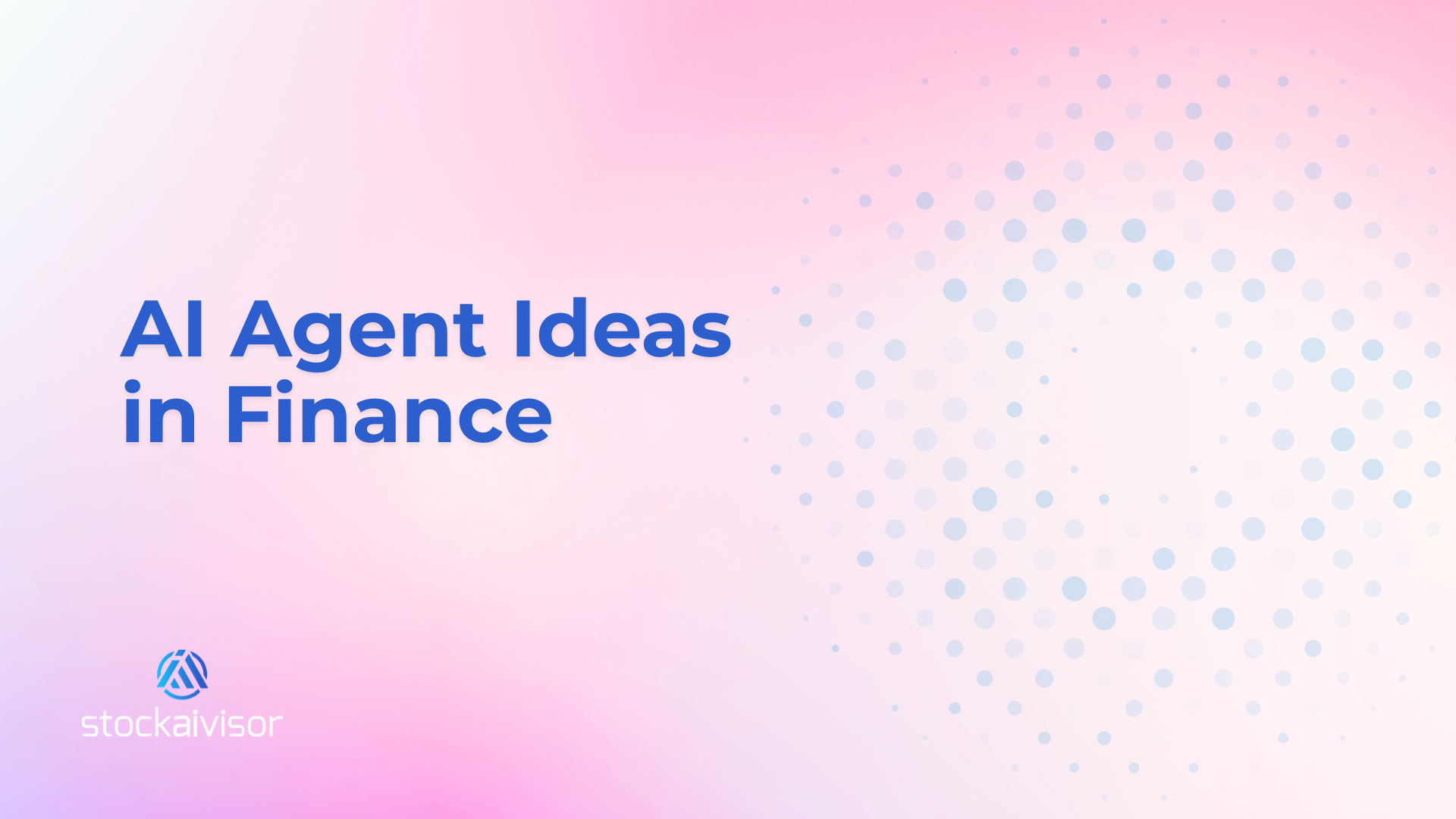
AI Agent Ideas in Finance
AI agents streamlines the business process with the help of artificial intelligence. AI agents can automate various tasks in finance, which have been once handled by finance professionals. These agents are in the intersection of generative AI, optimization, web scraping, machine learning and help users make decisions, provide recommendations, and automate processes.
As you can imagine, we can create many AI agents depending on your needs. Let’s discuss now what types of AI agents we can generate in finance.
- Trading Agents
A trading agent is an automated system that makes buy and sell decisions in financial markets based on predefined rules, algorithms, or learned behaviors. Let me break down the key components to create a trading agent.
Data Ingestion
The data ingestion module serves as the foundation of an AI trading agent by collecting both real-time and historical data from financial markets. This data is sourced through various channels, including APIs such as Bloomberg and Yahoo Finance, live news feeds, and alternative data sources like social media sentiment and satellite imagery. These diverse data streams enable the agent to maintain a comprehensive and timely understanding of market conditions.
Feature Engineering & Preprocessing
The feature engineering and preprocessing component transforms raw financial data into meaningful inputs that can be utilized by the AI models. This involves generating features such as moving averages, momentum indicators, sentiment scores, and volatility measures. These derived metrics help capture underlying patterns and trends in the market, enabling the trading agent to make more informed and accurate decisions.
Decision Making Engine
The decision-making engine is the core of the AI trading agent, responsible for generating actionable trading signals based on processed input features. It can utilize a range of techniques, from simple rule-based logic such as moving average crossovers to more advanced machine learning models like XGBoost or support vector machines (SVMs).
In addition, deep learning architectures, including LSTMs and Transformers, are often employed to capture complex temporal dependencies in market data. Reinforcement learning approaches, such as Deep Deterministic Policy Gradient (DDPG) and Proximal Policy Optimization (PPO), are also leveraged to enable agents to learn optimal trading strategies through interaction with dynamic market environments.
Execution Engine
The execution engine, or market interface, is responsible for interacting with broker or exchange APIs to place, modify, and cancel orders. It handles key tasks such as order routing, minimizing slippage, and reducing latency to ensure efficient trade execution.
Risk Management
The risk management module ensures that the trading strategy complies with predefined risk constraints. It employs tools like stop-loss and take-profit orders, dynamic position sizing, Value-at-Risk (VaR) calculations, and diversification checks to protect the portfolio from excessive exposure.
Portfolio Management
The portfolio management component maintains an accurate, real-time overview of the agent’s positions, cash balance, and overall portfolio performance. It enables real-time portfolio valuation, calculates exposure, and reconciles trades to ensure that all operations align with the intended strategy.
Backtesting
The backtesting provides a controlled environment to validate strategies using historical data before deployment. This includes modeling slippage and transaction costs, aligning time series data accurately, and performing walk-forward analysis to test robustness across different market conditions.
Monitoring and Logging System
The monitoring and logging system oversees the agent's real-time activities and logs all critical events. It includes alert mechanisms for significant drawdowns, maintains detailed trade journals, and ensures compliance through audit trails, supporting transparency and operational oversight.
2. Roboadvisor
This is another type of AI agent that helps investor make buy, sell, or hold position incorporating all the available information in the financial markets. This information gathered for creating roboadvisor can be stock price for technical analysis, financial statement for fundamental analysis, news for sentiment analysis, and user profile for personalization.
As an automated platform, robo-advisor manages investments with minimal human intervention. It starts by collecting user data such as risk tolerance, goals, and time horizon through a profiling system. This information drives the portfolio construction engine, which allocates assets using models like Modern Portfolio Theory or goal-based investing.
Next, the system selects suitable investments typically ETFs or index funds and automatically rebalances the portfolio to stay aligned with the target strategy. Many robo-advisors also offer tax optimization, using methods like tax-loss harvesting to improve after-tax returns.
Trades are executed through broker APIs, and users can monitor performance via a clean, real-time dashboard. A built-in compliance layer ensures regulatory standards are met, while alerts and logs track system behavior and portfolio risks.
Altogether, these core components make robo-advisors efficient, low-cost, and accessible tools for modern investors.
3. Agentic Chatbot with RAG
An agentic chatbot using RAG (Retrieval-Augmented Generation) in finance goes beyond static question answering. It actively plans, reasons, retrieves, and executes tasks to assist users with complex financial workflows such as portfolio analysis, risk evaluation, or navigating financial documents.
An agentic RAG chatbot for finance combines large language models with dynamic data retrieval to provide intelligent, real-time financial assistance. Unlike static bots, it acts like an agent: decomposing complex queries, retrieving relevant financial documents or live data, and generating informed responses.
Key components include:
- User Interface: Where users interact via text or voice.
- Agent Core: Plans and sequences tasks.
- Retriever Module: Pulls documents or data using vector search or APIs.
- LLM Reasoner: Generates answers grounded in retrieved data.
- Execution Tools: Runs calculations or invokes external APIs.
- Memory: Tracks past interactions.
- Safety Layer: Ensures compliant, safe outputs.
This setup supports tasks like portfolio analysis, earnings summarization, and investment Q&A with high contextual accuracy.
Conclusion
AI agents in finance are revolutionizing the industry by automating trading, investment, and advisory tasks. From trading agents that generate and execute strategies, to roboadvisors offering personalized portfolio management, and RAG-powered chatbots providing real-time financial insights these tools combine AI, data, and automation for smarter decision-making. They enhance efficiency, reduce costs, and make sophisticated financial services more accessible to everyone.
